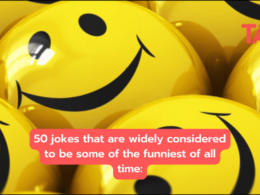Table of Contents
1. The Fault in Our Stars by John Green
2. Harry Potter series by J.K. Rowling
3. To Kill a Mockingbird by Harper Lee
4. The Hunger Games series by Suzanne Collins
5. 1984 by George Orwell
6. Animal Farm by George Orwell
7. The Perks of Being a Wallflower by Stephen Chbosky
8. The Catcher in the Rye by J.D. Salinger
9. Lord of the Flies by William Golding
10. The Giver by Lois Lowry
11. The Maze Runner series by James Dashner
12. Divergent series by Veronica Roth
13. The Book Thief by Markus Zusak
14. Eleanor & Park by Rainbow Rowell
15. The Outsiders by S.E. Hinton
16. Speak by Laurie Halse Anderson
17. The House on Mango Street by Sandra Cisneros
18. The True Diary of a Part-Time Indian by Sherman Alexie
19. The Adventures of Huckleberry Finn by Mark Twain
20. The Secret Life of Bees by Sue Monk Kidd
21. The Lord of the Rings series by J.R.R. Tolkien
22. The Chronicles of Narnia series by C.S. Lewis
23. The Harry Potter and the Cursed Child by J.K. Rowling
24. The Chronicles of Prydain series by Lloyd Alexander
25. The Raven Boys series by Maggie Stiefvater
26. Percy Jackson and the Olympians series by Rick Riordan
27. The Heroes of Olympus series by Rick Riordan
28. The Inheritance Cycle series by Christopher Paolini
29. The Lunar Chronicles series by Marissa Meyer
30. The Selection series by Kiera Cass
31. The Infernal Devices series by Cassandra Clare
32. The Mortal Instruments series by Cassandra Clare
33. The Gone series by Michael Grant
34. The Uglies series by Scott Westerfeld
35. The Gossip Girl series by Cecily von Ziegesar
36. The It Girl series by Cecily von Ziegesar
37. The Vampire Diaries series by L.J. Smith
38. The Twilight series by Stephenie Meyer
39. The House of Night series by P.C. Cast and Kristin Cast
40. The Lux series by Jennifer L. Armentrout
41. The Shatter Me series by Tahereh Mafi
42. The Young Elites series by Marie Lu
43. The Legend series by Marie Lu
44. The Red Queen series by Victoria Aveyard
45. The Grisha trilogy by Leigh Bardugo
46. The Six of Crows duology by Leigh Bardugo
47. The Throne of Glass series by Sarah J. Maas
48. The A Court of Thorns and Roses series by Sarah J. Maas
49. The Shadowhunter Chronicles by Cassandra Clare
50. The Dark Artifices series by Cassandra Clare
51. The Last Apprentice series by Joseph Delaney
52. The Bartimaeus trilogy by Jonathan Stroud
53. The Artemis Fowl series by Eoin Colfer
54. The Ranger’s Apprentice series by John Flanagan
55. The Michael Vey series by Richard Paul Evans
Conclusion
In conclusion, the compilation of 55 best books for teens offers a diverse range of literature that transcends genres, themes, and perspectives, providing something for every reader to enjoy anytime, anywhere. These books can captivate, inspire, and provoke thought, transporting readers to new worlds, introducing them to relatable characters, and sparking their imagination. Whether diving into a gripping fantasy adventure, exploring the complexities of adolescence through contemporary fiction, or delving into timeless classics that have stood the test of time, these books offer endless possibilities for discovery and growth. With themes ranging from identity and self-discovery to friendship, love, and resilience, each book holds the potential to resonate with teens and leave a lasting impact on their lives. So, whether reading for pleasure, for escapism, or personal enrichment, teens can find solace, excitement, and enlightenment within the pages of these 55 remarkable books, no matter where they are or when they choose to read.
FAQs
Q1: What are the “55 Best Books for Teens to Read Anytime Anywhere”?
Ans: The “55 Best Books for Teens to Read Anytime Anywhere” is a curated list of literature spanning various genres and themes, selected to cater to teenage readers’ diverse interests and preferences. From classic novels to contemporary young adult fiction, this list offers a wide range of reading options for teens to enjoy at any time and location.
Q2: How were the books selected for inclusion in the list?
Ans: The books were selected based on their popularity, critical acclaim, relevance to teenage readers, and enduring appeal. The selection process involved considering factors such as literary quality, thematic richness, cultural significance, and accessibility to ensure a well-rounded and diverse collection that appeals to a broad audience of teen readers.
Q3: Can readers of all ages enjoy the books on the list?
Ans: While the books on the list are primarily recommended for teen readers, many of them can be enjoyed by readers of all ages. These books’ themes, characters, and storytelling often resonate with a wide audience, transcending age barriers and appealing to readers of varying interests and backgrounds.
Q4: How can I find the books on the list for reading?
Ans: The books on the list can be found at local bookstores, libraries, online retailers, or e-book platforms. Many titles are widely available in various formats, including print, e-book, and audiobook, making it convenient for readers to access them anytime, anywhere. Additionally, readers can explore the list and choose titles that interest them based on personal preferences and reading tastes.
Q5: Are there any age recommendations for the books on the list?
Ans: While the books on the list are primarily targeted toward teen readers, they can generally be enjoyed by readers of all ages, including young adults and adults. However, some books may contain mature themes, language, or content that may be more suitable for older teens or readers comfortable with such material. It’s recommended that parents and educators review the content of individual books to determine their appropriateness for younger readers.
Q6: Can the books on the list be used for educational purposes?
Ans: Yes, many of the books on the list can be used for educational purposes in school settings or for independent study. These books often explore important themes, issues, and experiences relevant to teenagers, making them valuable resources for discussions, analysis, and critical thinking exercises. Teachers and educators may incorporate these books into their curriculum to enhance literacy skills, foster empathy and understanding, and promote cultural awareness among students.
Q7: Are any contemporary or diverse voices represented in the list of books?
Ans: Yes, the list of books includes a variety of contemporary and diverse voices representing different cultures, backgrounds, and perspectives. These books feature protagonists from diverse racial, ethnic, and cultural backgrounds, as well as LGBTQ+ characters and characters with disabilities. By including diverse voices, the list aims to promote inclusivity, representation, and empathy among teen readers, allowing them to see themselves reflected in literature and to gain insight into the experiences of others.
Q8: Can the books on the list be recommended for book clubs or group discussions?
Ans: Many of the books on the list are well-suited for book clubs or group discussions, as they often prompt thought-provoking conversations and offer rich material for analysis and interpretation. Book clubs or groups of teen readers, educators, parents, or community members can select titles from the list to read together and engage in discussions about characters, themes, and literary techniques. This collaborative approach to reading can enhance comprehension, deepen understanding, and foster a sense of community among participants.
Q9: How can I explore more books similar to those on the list?
Ans: To explore more books similar to those on the list, readers can consult recommendations from bookstores, libraries, online book communities, or literary websites dedicated to young adult literature. Additionally, readers can explore themed book lists, book awards, or curated reading lists from reputable sources to discover new titles and authors that align with their interests and preferences.
Q10: Are any resources available for further exploration of the themes or topics covered in the books on the list?
Ans: Yes, various resources are available for further exploration of the themes or topics covered in the books on the list. Readers can find discussion guides, author interviews, scholarly articles, and educational websites dedicated to specific themes or topics in the books. Additionally, libraries, educational institutions, and online platforms often offer supplementary materials, such as lesson plans, reading comprehension activities, and multimedia resources, to support deeper engagement with the content.










